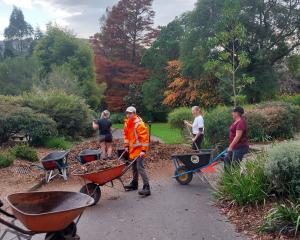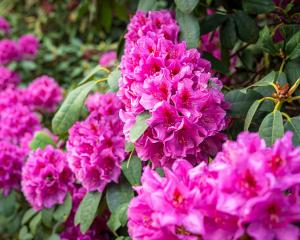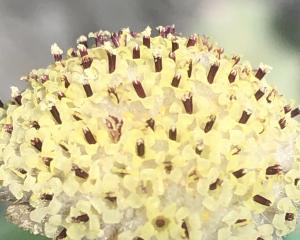A Dutch park gets the thumbs-up from Gillian Vine.
I read recently that tulips should be treated as annuals, a North Island comment if ever I saw one.
Southern gardeners would be puzzled by this, as tulips thrive in our cool winters and low humidity, although they need a sunny, well-drained spot to do their best.
For years, tulip fields at Tapanui, near Stirling in South Otago, and outside Invercargill were a spring highlight, with garden clubs hiring buses to visit the businesses established by migrants from the Netherlands.
With that link, it is understandable that many gardeners put the Dutch bulb fields high on their itinerary for a spring visit to Europe.
At their peak, the tulip fields are eye-searing bands of red, orange, yellow and pink that dominate the sandy coastal plains, most of them below sea level. Lisse, some 50km southwest of Amsterdam, is considered the centre of the industry.
Close to Lisse is the much-visited Keukenhof, where each year 7 million bulbs are planted in a 32ha park that was once the kitchen garden for a nearby castle.
I was a bit pessimistic about going in mid-May, just a few days before Keukenhof closed for the season but although the tulips in the surrounding bulb fields had had their flowers removed and were bland green expanses, the park itself was stunning. As well as the latest-blooming of the 100 tulip varieties - including peach-pink Menton, popular in New Zealand - there were grape hyacinths, fritillarias and pots of hyacinths under magnificent beeches. The trees date back to the 1840s when the 15th-century garden was redesigned and were retained when the modern garden was established in 1949 so growers from the Netherlands could showcase bulbs and flowers as a way of helping the Dutch export industry.
From a windmill at one end of the park, there are fine views across the surrounding bulb fields, while behind the windmill, visitors can catch a "whisper boat" for a leisurely ride around Keukenhof's perimeter.
The historic garden was enchanting, although I was amused to see visitors "aahing" over the chocolate vine (Akebia quinata), now banned from sale, propagation and distribution in New Zealand.
So late in the two-month season, the most impressive areas were the five pavilions, which featured mind-boggling displays of lilies, orchids, hippeastrums and new plants from auriculas to delphiniums.
One of the most exciting was the lily display in the Willem-Alexander pavilion, where tall pillars of Oriental and Asiatic lilies formed the centrepiece and dozens of other varieties lined the perimeter.
Another pavilion, the Oranje Nassau, was filled with thousands of orchids, many with cards indicating how many points they had gained in the prestigious annual competition in which nurseries submit flowers for assessment. As well as the familiar Phalaenopsis, the industry's top orchid, there were dozens of other varieties, including pansy-faced miltonias, spiky brassidiums, denrobiums and vandas. The colours were as varied - white, lavender, red, pink, yellow and hot orange.
Although I loved almost everything in the immaculate park and pavilions, I was told I should return next year in April to see the huge outdoor flower drifts at their best, something to put on the wish list, as the time at Keukenhof was all too brief.
It was best summed up by a woman from Gore, who commented: "It was worth travelling halfway round the world to see this."
• Gillian Vine flew to Amsterdam with Emirates Airlines, which flies daily to Europe from Auckland and Christchurch, via Dubai.
Keukenhof
Keukenhof will be open again from March 21, 2013, until May 20, 2013. Some New Zealand companies offer all-inclusive tours, while Dutch companies offer one-day trips from Amsterdam for about $NZ100.












